As winter’s chill holds your garden in its icy grip, you might find yourself longing for the vibrant colors and delicate fragrances of spring. For those of us with small spaces, balconies, or limited outdoor areas, the wait can feel particularly long. What if you could coax a touch of spring into your home weeks before nature intends, brightening your indoor winter garden and lifting your spirits? You can, with the simple, rewarding technique of forcing branches.
Forcing branches means bringing dormant woody stems indoors, providing them with the warmth and moisture they need to “wake up” and bloom. This age-old practice offers a delightful preview of spring, transforming bare twigs into an exquisite display of early flowers. It is incredibly low-maintenance, surprisingly simple, and perfectly suited for small-space gardeners looking to add a natural, elegant touch to their homes. Imagine a burst of golden forsythia or delicate cherry blossoms gracing your living room when snow still covers the ground. This guide will walk you through every step, ensuring your success in bringing these beautiful flowering branches to life indoors.

Embrace the Promise of Spring: What is Forcing Branches?
Forcing branches is the art and science of tricking woody plants into blooming indoors, typically several weeks or months ahead of their natural outdoor schedule. You are essentially replicating the natural conditions a plant experiences in late winter, signaling it is time to break dormancy and produce flowers. This process relies on understanding a plant’s natural life cycle, particularly its need for a period of cold, known as chilling, before it can bloom.
Many deciduous trees and shrubs set their flower buds in the previous growing season. These buds then enter a dormant state, requiring a specific amount of cold exposure to develop properly. Once they experience sufficient cold, they are ready to respond to warmer temperatures and moisture by breaking dormancy and flowering. By bringing branches indoors after they have met their chilling requirements, you provide that warmth and moisture prematurely, accelerating their bloom cycle. You are not changing the plant’s fundamental biology, you are simply giving it an early spring.
This technique is a fantastic solution for small-space gardeners. You do not need a large garden or extensive outdoor space to enjoy the beauty of flowering branches. A few carefully selected stems from a local park (with permission), a friend’s yard, or even your own small shrubs can create a stunning focal point in your home. It connects you to nature even when your outdoor garden is sleeping, providing a truly active and engaging form of indoor winter garden therapy.

Why Force Branches? Your Indoor Winter Garden Solution
Beyond the sheer delight of seeing early blooms, forcing branches offers several practical and emotional benefits. These advantages make it an excellent activity for any gardener, especially those with limited space.
- Beat the Winter Blues: The most immediate benefit is the psychological boost. Winter can feel long and grey. Introducing living, blooming plants into your home injects color, fragrance, and the undeniable promise of warmer days. It creates a vibrant indoor winter garden display that significantly improves your home’s atmosphere.
- Aesthetic Appeal: Forced branches are beautiful. They offer a sophisticated, natural elegance that enhances any interior decor. A tall vase of cherry blossoms or a cluster of pussy willow catkins instantly becomes a striking centerpiece.
- Low Maintenance: Once you set them up, forced branches require minimal attention. They do not need potting soil, elaborate lighting, or constant watering like many other indoor plants. You simply change their water periodically.
- Cost-Effective Decor: Instead of buying expensive cut flowers, you can source branches for free or at a very low cost. This allows you to enjoy luxurious floral displays without a significant financial outlay.
- Educational Opportunity: Observing the buds swell and open into flowers provides a fascinating, hands-on lesson in plant biology. It is a wonderful way to connect with the natural world and deepen your understanding of plant dormancy and growth.
- Eco-Friendly Gardening: You are utilizing existing resources, often pruning material that might otherwise go to waste. This sustainable practice promotes an appreciation for nature’s cycles without adding to your carbon footprint from commercially grown flowers.
- Perfect for Small Spaces: This technique is ideal for apartments, balconies, and small yards. You bring a piece of a larger landscape indoors, experiencing the beauty of trees and shrubs that you might not have room to grow yourself.
Forcing branches transforms a barren winter into an active growing season within your home, providing both beauty and a sense of accomplishment.
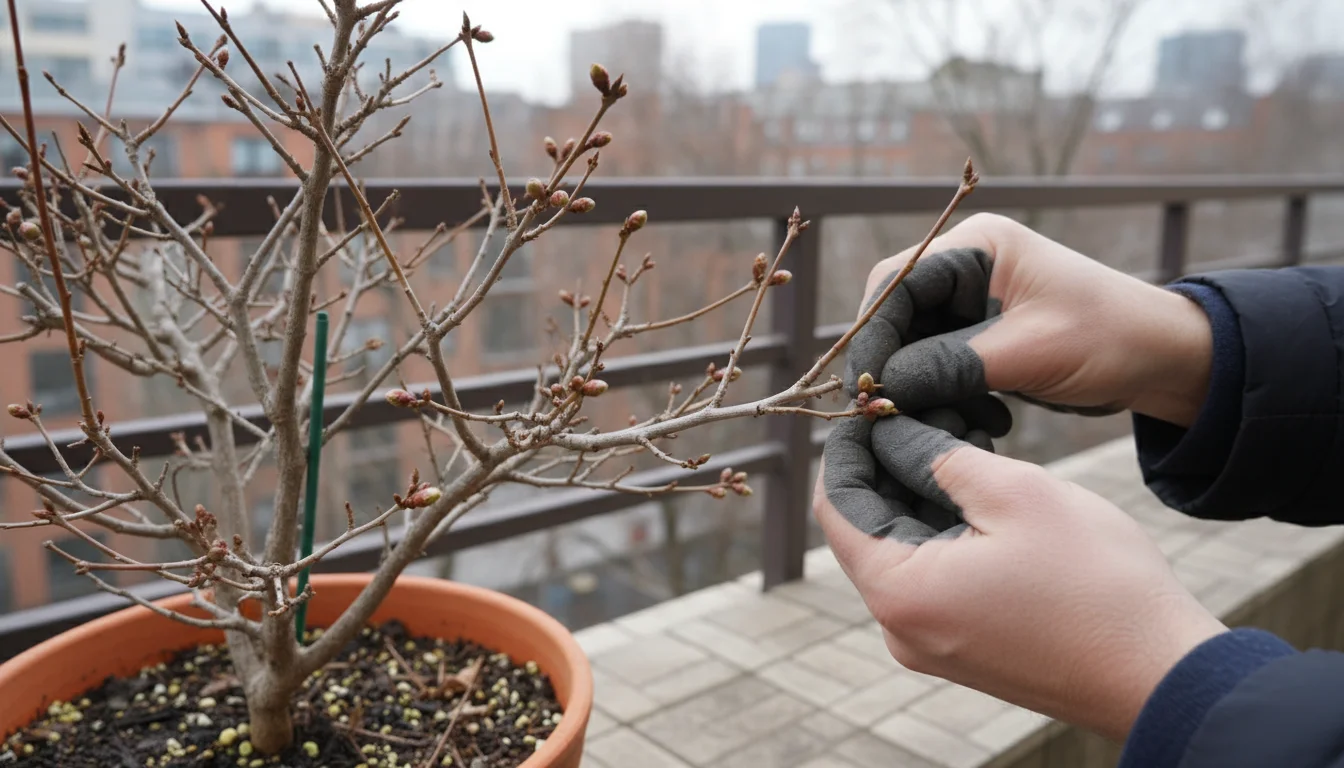
Choosing Your Blooms: Best Branches for Forcing Success
The success of your forcing project largely depends on selecting the right plant material. Not all woody plants respond well to forcing, and some offer more dramatic or reliable results than others. Look for plants known for their early spring blooms, as these naturally have a shorter chilling requirement and a greater readiness to “wake up.”
When selecting branches, observe the buds. Plump, round buds typically contain flower embryos, while thinner, more pointed buds are usually leaf buds. Forcing branches with prominent flower buds increases your chances of a spectacular display.
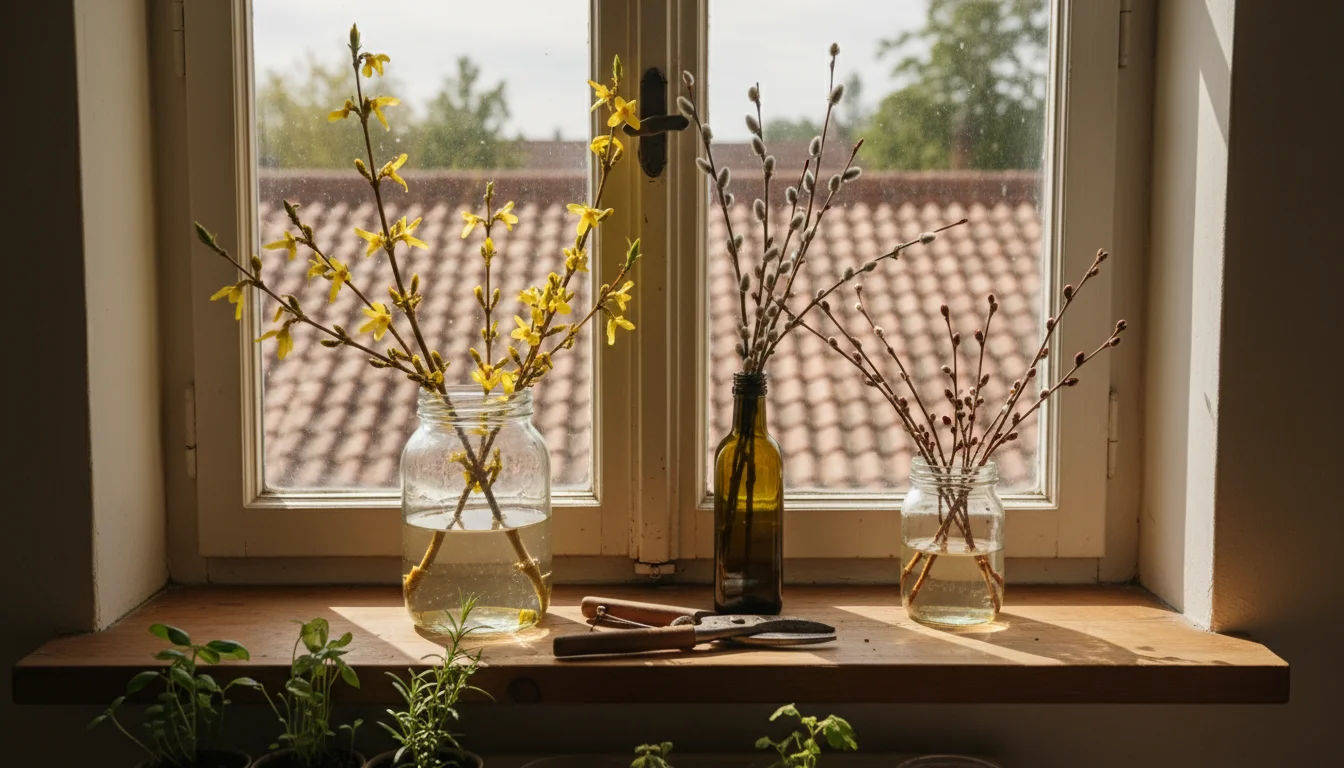
Top Choices for Flowering Branches to Force:
- Forsythia (Forsythia spp.): This is arguably the easiest and most reliable plant to force. Its bright yellow flowers are a true herald of spring. You can often see flower buds starting to swell on bare branches in late winter, even before cutting. Forsythia responds quickly, often blooming within 1-2 weeks.
- Pussy Willow (Salix discolor): While not a true flower, the fuzzy, silvery catkins of pussy willow are highly ornamental and emerge very early. They are exceptionally easy to force and last a long time, both on the plant and as cut branches. They add textural interest and a gentle, soft appeal to your indoor display.
- Cherry (Prunus spp., especially ornamental varieties): Kwanzan or Yoshino cherries are popular choices. Their delicate pink or white blossoms are iconic. Cherry branches can take a bit longer to force, usually 2-4 weeks, but the reward is immense. Look for plump, well-developed buds.
- Dogwood (Cornus florida): The iconic white or pink bracts (which many mistake for petals) of dogwood are beautiful. These branches require a longer chilling period and more patience, often taking 3-5 weeks to open.
- Lilac (Syringa vulgaris): The fragrant purple or white blooms of lilac are a garden favorite. Forcing lilac requires a good chilling period, typically 3-4 weeks for blooms to appear. The perfume they release indoors is intoxicating.
- Quince (Chaenomeles spp.): Flowering quince offers vibrant red, orange, or pink blooms on thorny branches. It forces readily and adds a dynamic splash of color. Expect blooms in 2-3 weeks.
- Witch Hazel (Hamamelis spp.): Some varieties bloom outdoors in late winter, making them excellent candidates for forcing. Their unique, spidery yellow or orange flowers are fascinating. They can bloom in 1-3 weeks.
- Crabapple (Malus spp.): Small, apple-like blossoms in shades of white, pink, and red. They force well, typically in 3-4 weeks.
- Serviceberry (Amelanchier spp.): Delicate white flowers followed by edible berries. They force reliably in 2-3 weeks.
When you choose your flowering branches, consider the space where you will display them. Taller branches are stunning in floor vases, while shorter cuttings work beautifully on tabletops. Experiment with a few different types to see what works best for your home and personal preference.
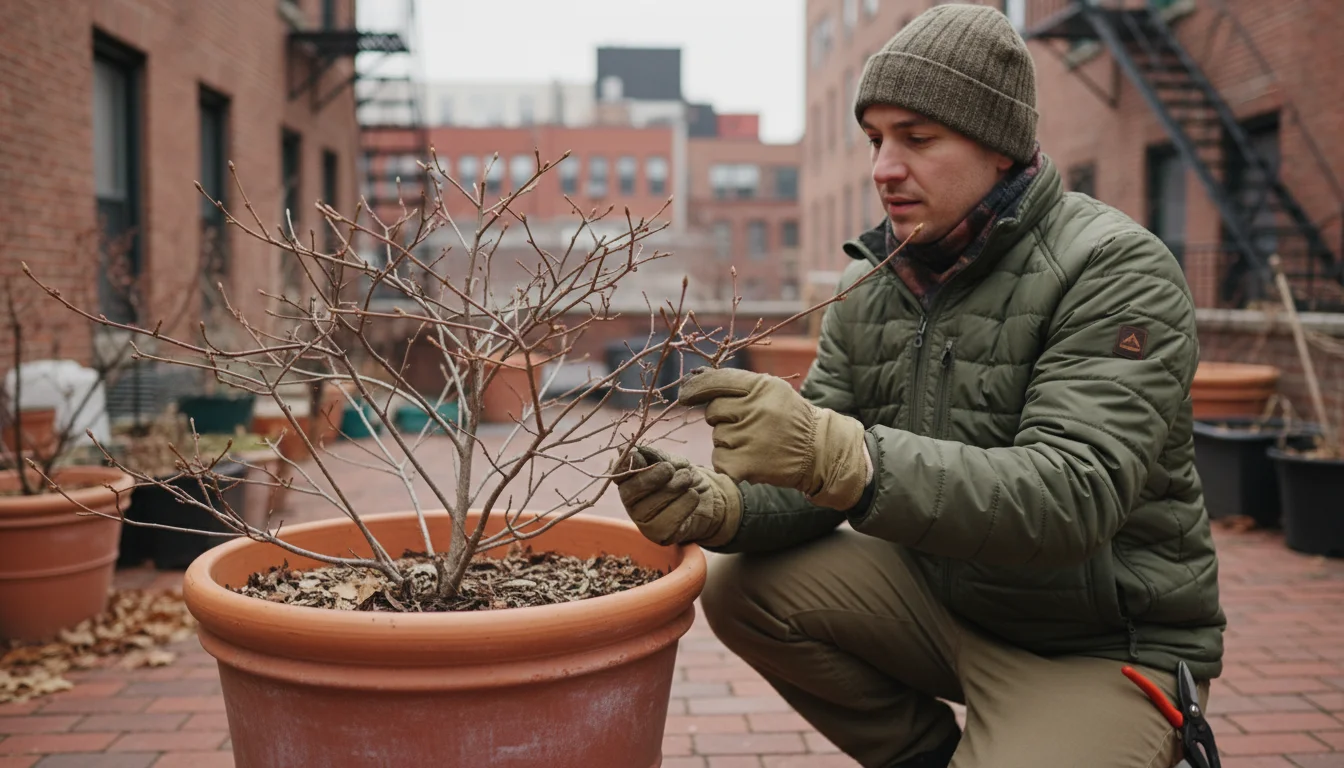
Timing is Everything: When to Cut Branches for Forcing
The success of forcing branches hinges significantly on proper timing. You cannot simply cut branches any time in winter and expect them to bloom. The plants need to have completed their chilling requirement, a crucial period of cold temperatures that breaks dormancy and primes the flower buds for growth.
Most deciduous trees and shrubs require a certain number of “chill hours” (hours spent below a specific temperature, typically around 45°F or 7°C, but above freezing) to initiate bloom development. If you cut branches too early, before they have received enough cold, they might simply produce leaves or fail to bloom altogether. If you wait too long, they might have already started to naturally swell their buds outdoors, meaning you have missed the ideal window for early forcing.
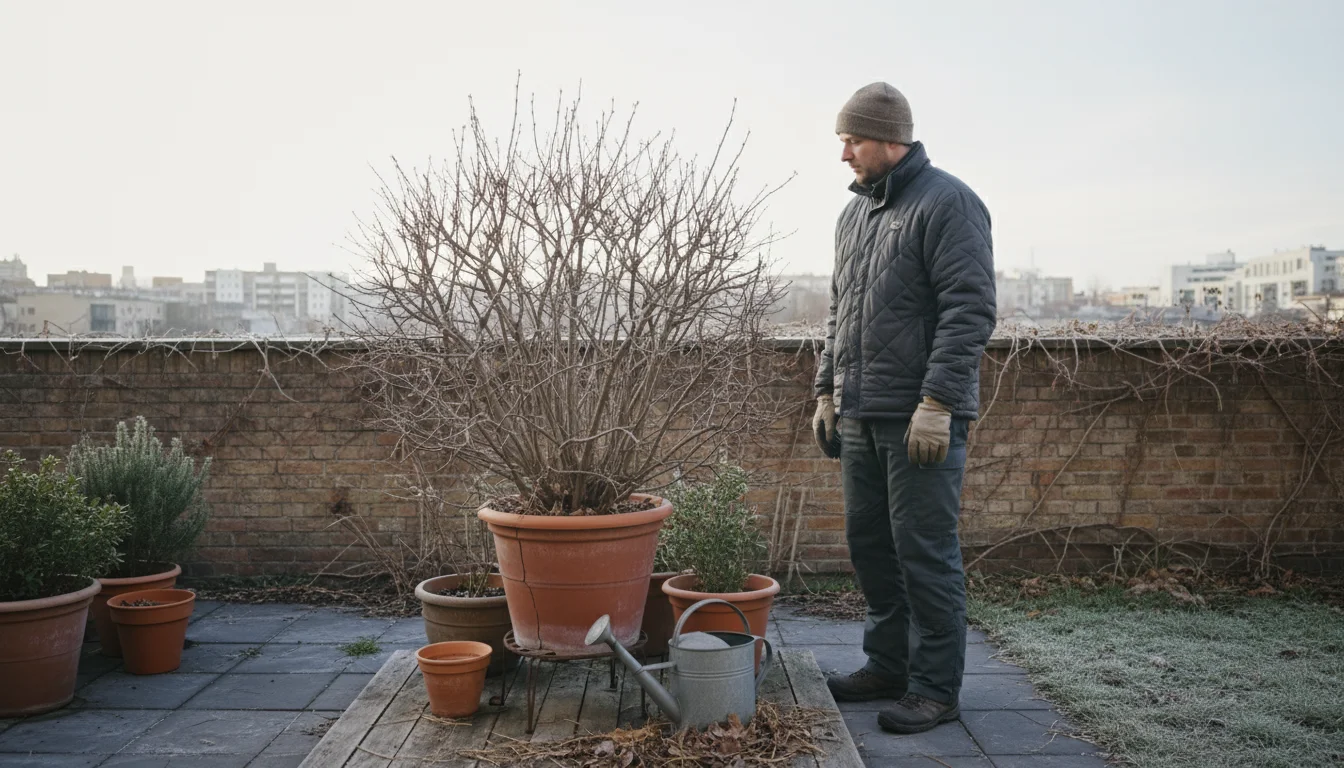
The Ideal Window:
The best time to cut branches for forcing is typically in late winter, usually from late January through March, depending on your climate zone and the specific plant. This period ensures the plant has experienced adequate cold temperatures. In warmer climates, you might be able to start earlier; in colder regions, you might need to wait a bit longer.
Here is a general guide to help you decide when to cut branches for forcing:
- Early January: Only for very easy-to-force plants like pussy willow or some early witch hazels. These have minimal chilling requirements.
- Late January to Mid-February: Ideal for forsythia, quince, some cherry varieties, and more pussy willow. These plants generally respond quickly.
- Late February to March: Best for lilacs, crabapples, dogwoods, and slower-to-force varieties. These typically need a longer chilling period to ensure reliable bloom.
A good rule of thumb: Observe the plants in your garden or local area. If you see their outdoor buds starting to swell even slightly, they are likely ready for forcing. If the ground is frozen solid and buds show no signs of life, it might still be a bit too early, especially for plants that need more chilling. However, if your region has experienced a solid period of freezing temperatures for several weeks, it is a good indication that the chilling requirement has been met.
By understanding when to cut branches for forcing, you significantly increase your chances of a beautiful, early spring bloom inside your home.
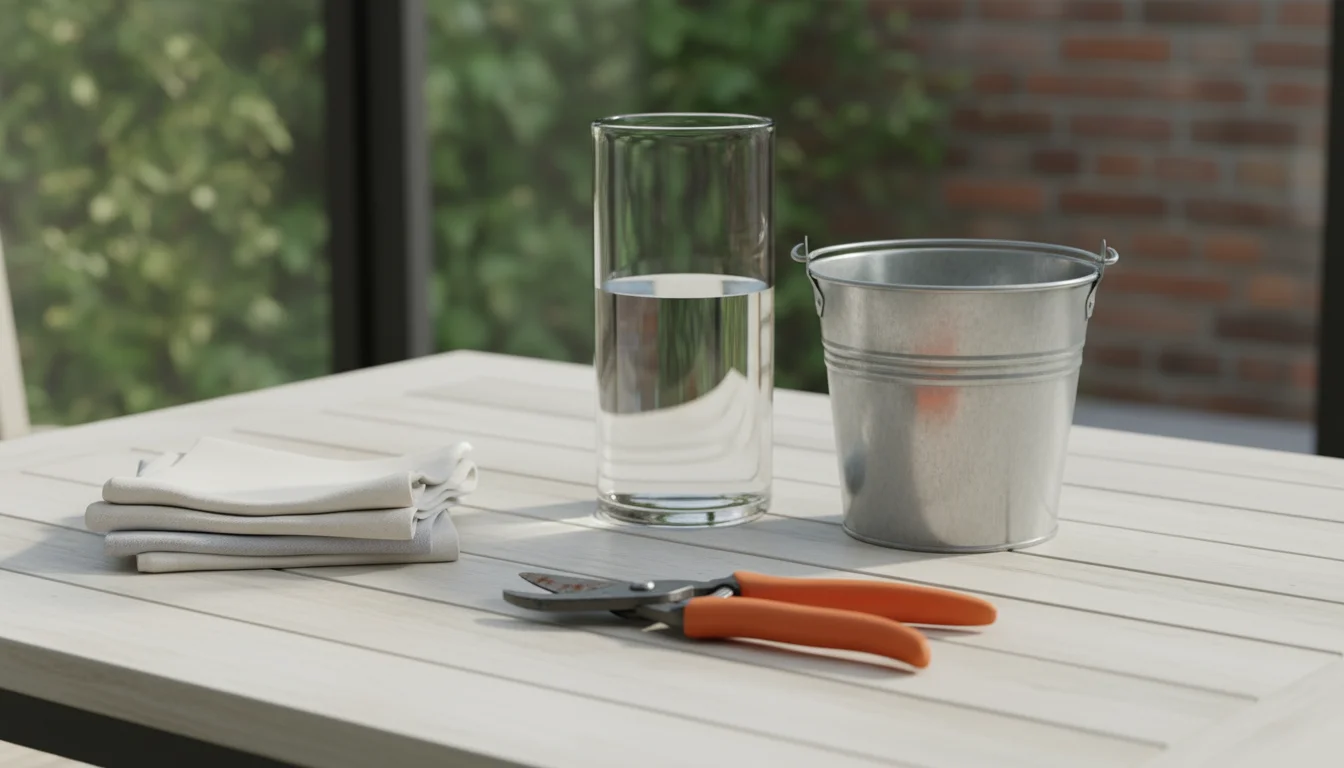
Gathering Your Supplies: Essential Tools for Forcing Branches
You do not need a lot of specialized equipment to successfully force branches. Most of what you need you likely already own or can easily acquire. Gathering your supplies before you start ensures a smooth and enjoyable process.
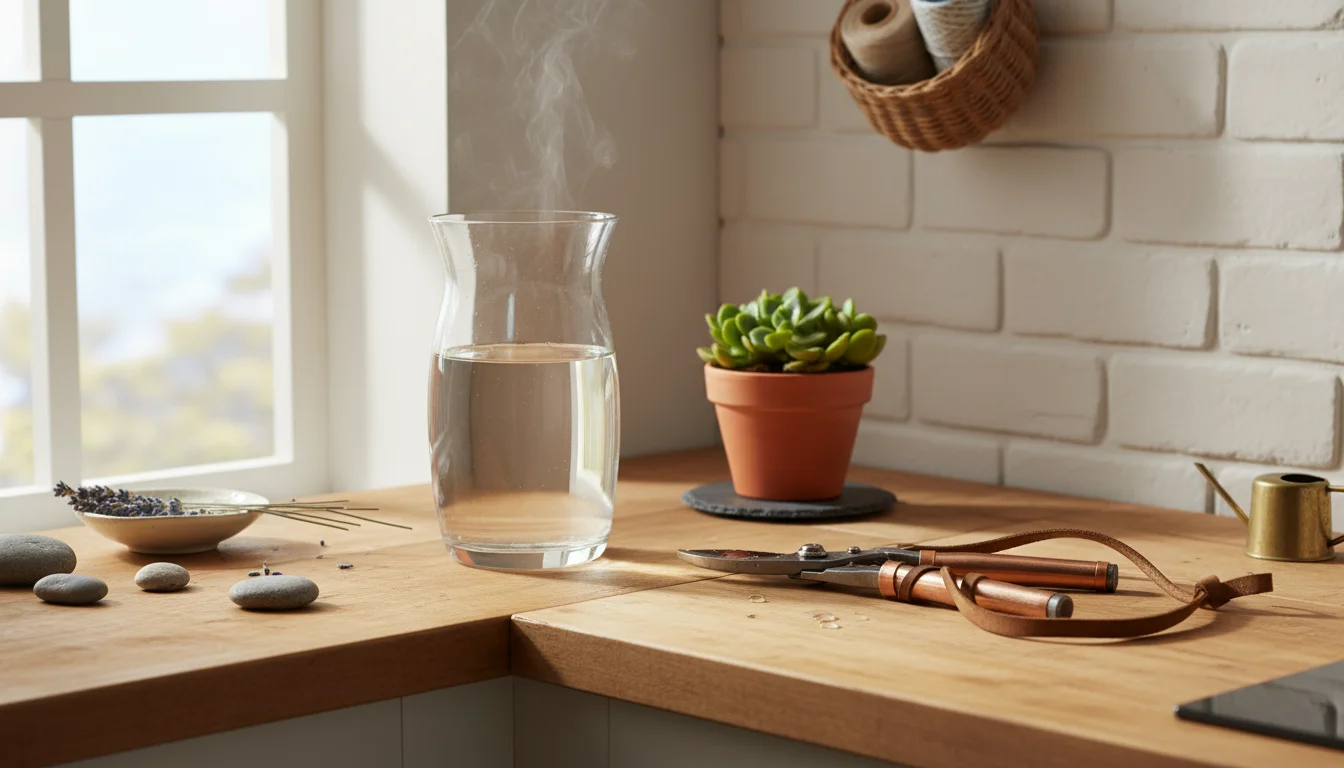
Here is what you will need:
- Sharp Pruning Shears or Loppers: Clean, sharp tools are crucial for making clean cuts that heal well on the plant and allow the branches to absorb water efficiently. Hand pruners work for smaller branches, while loppers are better for thicker ones (up to 1.5 inches in diameter). A pruning saw may be necessary for very thick branches.
- A Large Bucket: You will use this to immediately place the cut branches in water to prevent them from drying out. Any clean bucket that holds water will do.
- Warm Water: Tap water is usually fine. Warm water helps break dormancy by mimicking spring conditions and encourages water uptake.
- A Sturdy Vase or Container: Choose a vase that is tall and heavy enough to support your branches once they are full of water and blossoms. Clear glass allows you to monitor water levels, but any watertight container works. Consider the aesthetic appeal for your indoor winter garden.
- Optional Additives (Aspirin or Bleach): Some gardeners add a crushed aspirin tablet to the water, believing it promotes water uptake and acts as a mild acidifier. A tiny drop of bleach (about 1/4 teaspoon per gallon) can help inhibit bacterial growth in the water, keeping it cleaner for longer. These are not strictly necessary but can be helpful.
- A Hammer or Knife (Optional, for stubborn branches): For very woody, thick branches, slightly smashing or splitting the cut ends can increase the surface area for water absorption. This is generally not needed for younger, thinner branches.
Having these simple tools ready will prepare you for the step-by-step process of how to force flowering branches indoors.
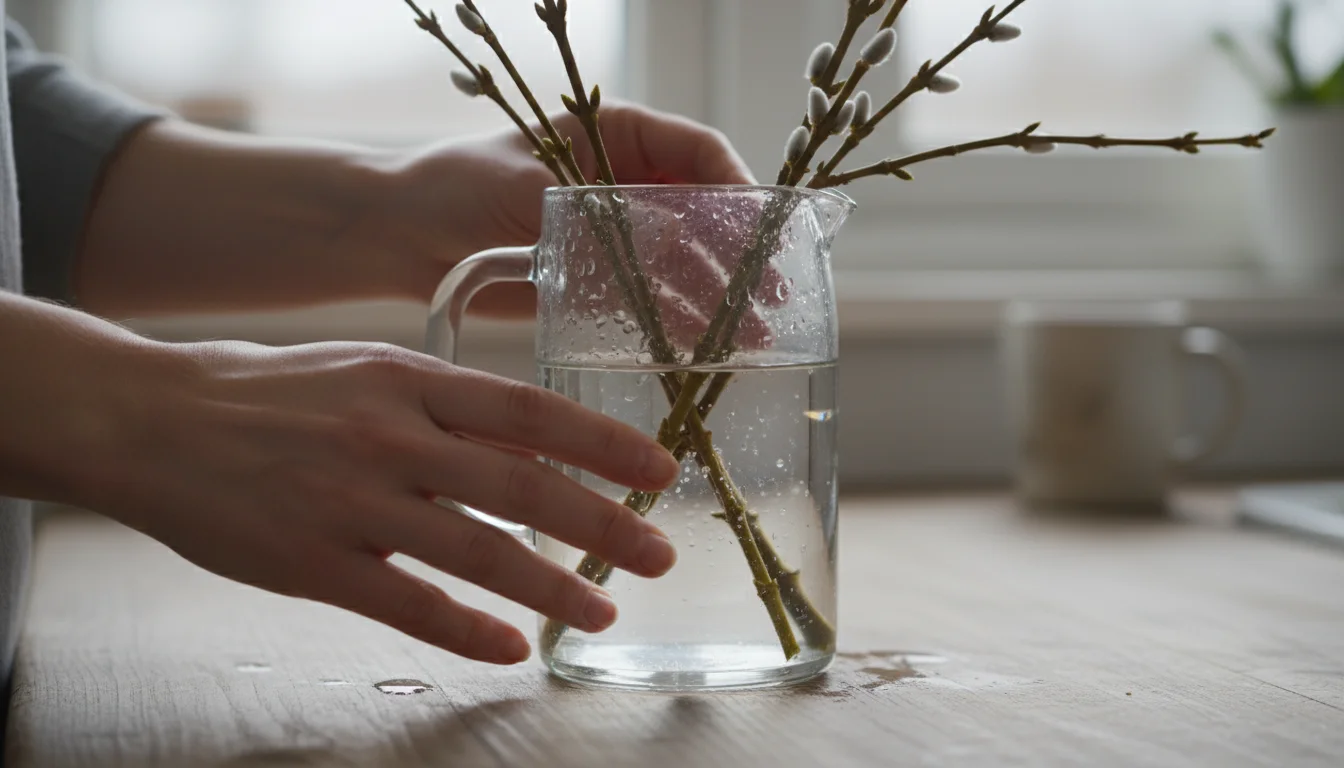
The Step-by-Step Process: How to Force Flowering Branches Indoors
This is where the magic happens! Follow these steps carefully to maximize your chances of success in growing flowers indoors in winter.

Step 1: Selecting and Cutting Your Branches
- Scout Your Plants: Identify the specific plants you wish to force. Look for healthy branches with plenty of plump, well-formed flower buds. Avoid branches with damaged or withered buds.
- Choose Wisely: Select branches that are about 1 to 3 feet long. Shorter branches are fine for smaller vases, longer ones make a dramatic statement. Aim for branches that are about 1/4 to 1/2 inch in diameter, though thinner forsythia or pussy willow work, and thicker branches for dogwood or lilac are acceptable.
- Make Clean Cuts: Using sharp, clean pruning shears, make a 45-degree angle cut. This provides a larger surface area for water absorption and prevents the branch from sitting flat on the bottom of a bucket, which can block water uptake. Cut just above a bud or side branch to encourage new growth on the parent plant.
- Prune Sustainably: When cutting branches from your own plants, practice good pruning techniques. Remove no more than 1/4 of the plant’s total growth. Select branches that are crossing, rubbing, or growing inward. This benefits the plant by promoting better air circulation and light penetration, making your forcing project an act of good garden husbandry.
- Immediate Hydration: As soon as you cut each branch, plunge its cut end into a bucket of warm water. Do not let the cut ends dry out, even for a few minutes. Bring the bucket with you as you collect branches.
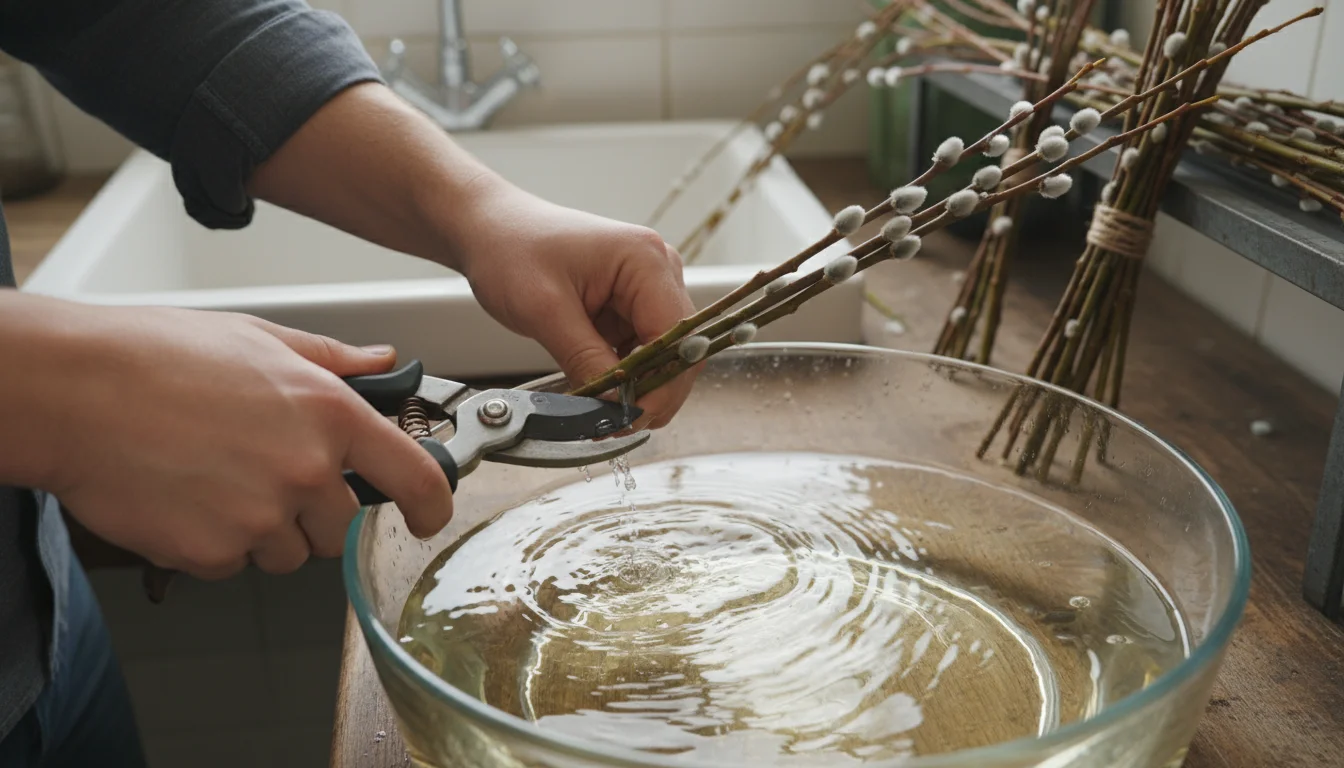
Step 2: Preparing the Branches for Optimal Water Uptake
Once you bring your bucket of branches indoors, a few crucial preparation steps ensure maximum water absorption.
- Recut Underwater (Optional, but Recommended): For the very best results, recut the branch ends under warm water. Fill your sink or a basin with warm water, submerge the bottom 2-3 inches of a branch, and make a fresh 45-degree cut. This prevents air bubbles from entering the vascular system, which can block water uptake.
- Crush or Split Woody Ends (For Thicker Branches): If you are working with very thick or woody branches (like lilac or dogwood), gently crush the bottom 2-3 inches of the stem with a hammer or split the bottom with a knife. This increases the surface area exposed to water, aiding absorption. Be careful not to splinter the stem excessively.
- Remove Submerged Buds/Leaves: Strip any buds or small side branches that would be below the waterline in your vase. Submerged organic material can rot and contaminate the water, promoting bacterial growth.
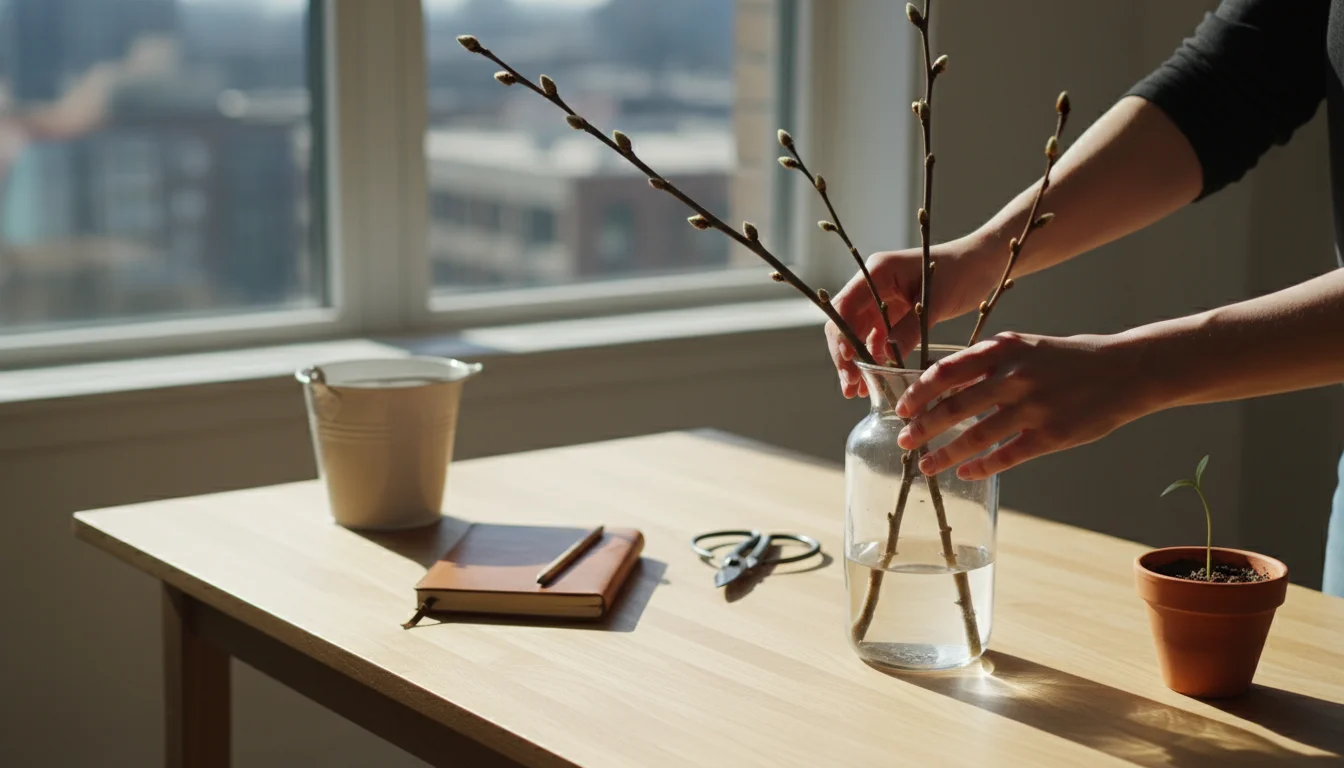
Step 3: Conditioning and Arrangement
This phase readies your branches for their beautiful display.
- Initial Soak: Place your prepared branches in a bucket of warm water (around 100°F or 38°C) for several hours, or even overnight, in a cool, dark location like a basement or garage. This allows them to fully hydrate before moving to their display spot.
- Choose Your Vase: Select a vase that complements your branches and provides stability. Tall, heavy vases work best for long branches. Fill the vase with fresh, lukewarm water. If using, add a tiny drop of bleach or a crushed aspirin.
- Arrange for Display: Arrange your branches artistically in the vase. Consider their natural shape and how they will look once the buds open. You might need to prune a few more small pieces for balance.
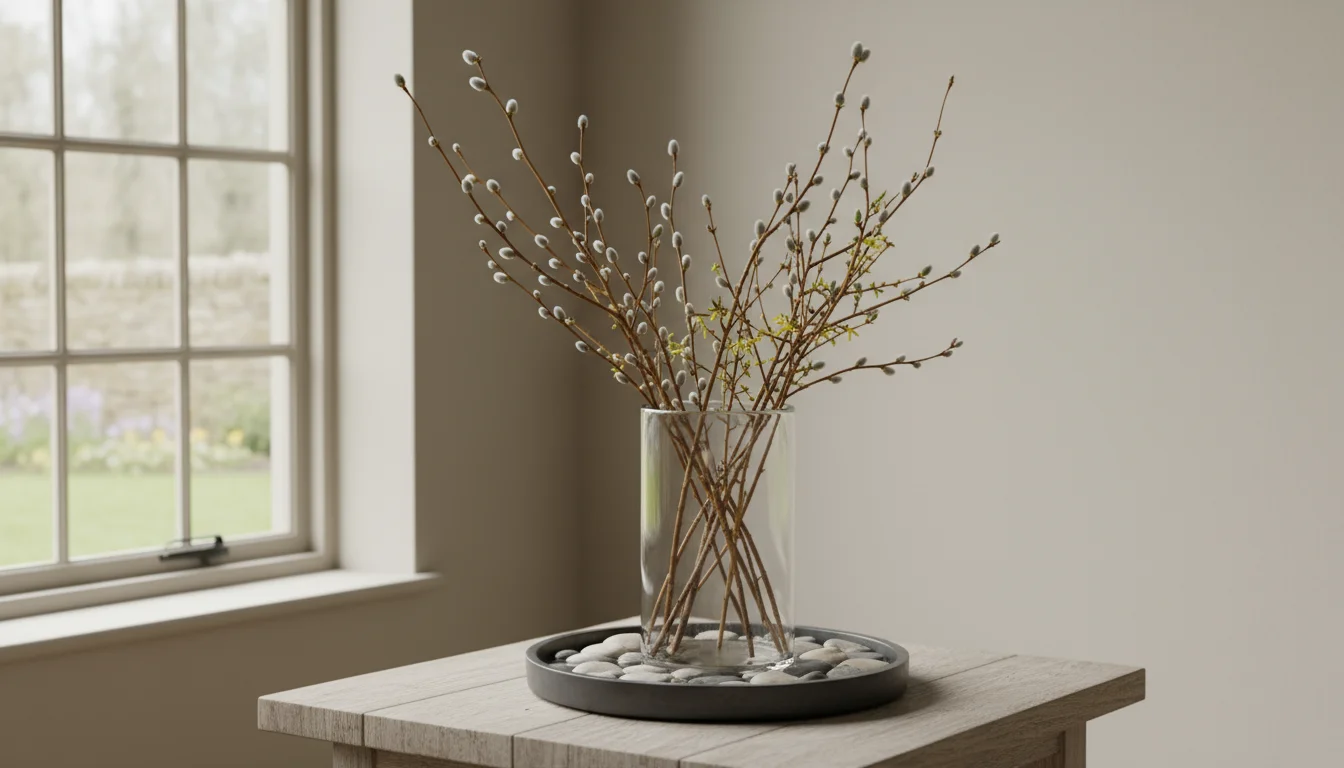
Step 4: Creating the Ideal Environment for Forcing Branches
The right environment encourages buds to open successfully.
- Warmth: Place your vase in a warm room, ideally between 60-70°F (15-21°C). This warmth signals to the branches that spring has arrived. Avoid placing them directly next to a heat vent, as this can dry them out too quickly.
- Humidity: Dry indoor air is the enemy of forcing. Increase humidity around your branches by misting them daily with a spray bottle filled with lukewarm water. You can also place the vase on a pebble tray filled with water, ensuring the bottom of the vase does not sit directly in the water. For very challenging varieties, you might place them in a bathroom while you shower or even loosely cover them with a clear plastic bag for a few days (making sure to remove it periodically for air circulation).
- Indirect Light: Initially, bright, indirect light is best. Avoid direct sunlight at first, as it can cause the buds to dry out before they have a chance to open. Once buds begin to show color or swell significantly, you can move them to a brighter spot.
- Change Water Regularly: Change the water in the vase every 1-2 days. This prevents bacterial buildup and ensures a fresh supply of hydration. Recutting the very ends of the branches every few days can also help.
Patience is key. Some branches, like forsythia, might bloom in 1-2 weeks, while others, like dogwood or lilac, can take 3-5 weeks. Observing the buds swelling and eventually bursting into bloom is a truly rewarding experience, transforming your home into a vibrant indoor winter garden.
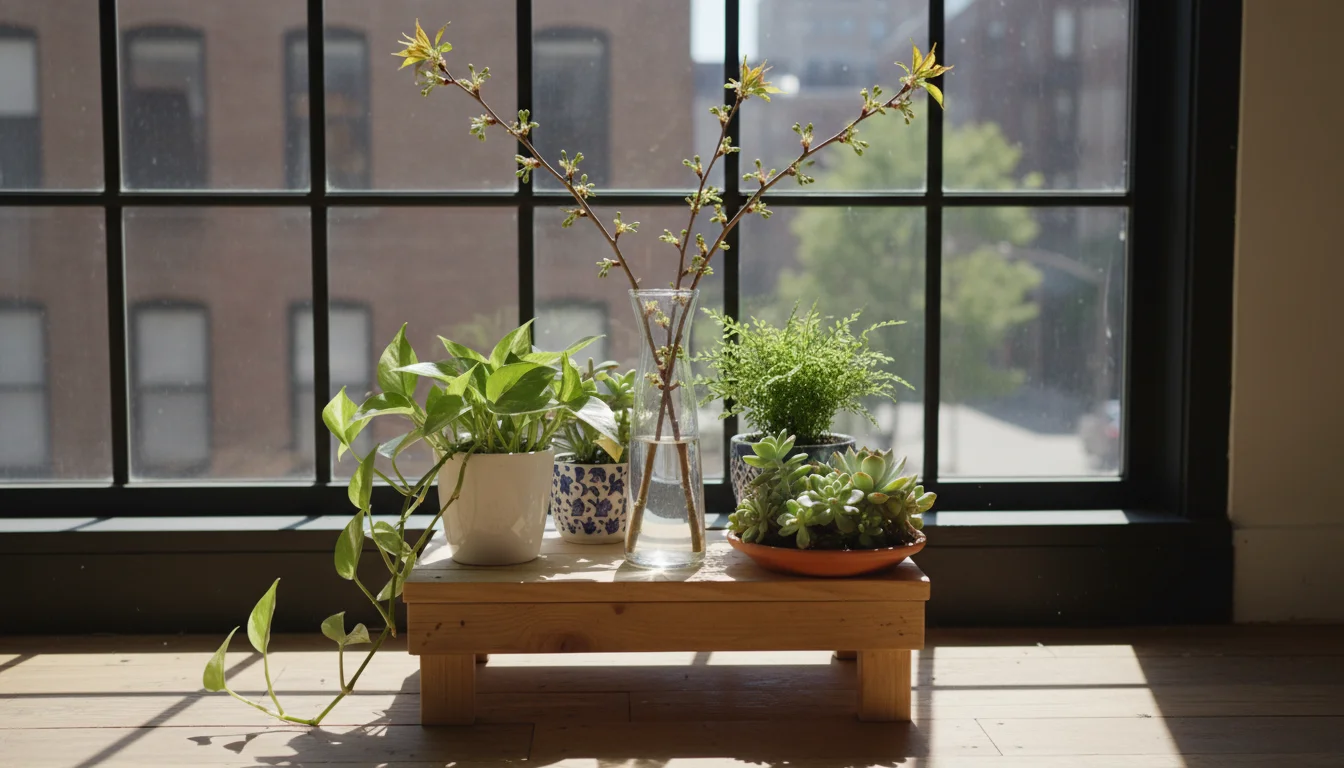
Accelerating and Sustaining Blooms: Tips for Success
Once your branches are set up, a few ongoing practices can help ensure vibrant blooms and extend their beauty.
- Maintain Consistent Warmth: Aim for a stable room temperature. Fluctuations can stress the branches. If your home is cooler at night, that is generally fine, mirroring natural temperature drops.
- Prioritize Humidity: This is a critical factor, especially in heated homes. Beyond daily misting, consider using a room humidifier nearby. Even grouping other houseplants around your branches can create a microclimate with slightly higher humidity.
- Fresh Water is Non-Negotiable: Commit to changing the water every other day, or daily if you notice cloudiness. Use fresh, lukewarm water each time. If you see the cut ends getting slimy, clean them gently with a brush and make a fresh cut.
- Re-cut Stems Periodically: Every few days, take the branches out of the vase and make a small, fresh diagonal cut at the very bottom of each stem. This reopens the vascular tissue, improving water uptake, much like you would do for cut flowers.
- Rotate for Even Light: Once flowers begin to emerge, rotate the vase occasionally. This ensures all sides of the branches receive adequate, indirect light, promoting even blooming and growth.
- Monitor for Pests: While uncommon, occasionally you might bring in a tiny overwintering pest. Inspect your branches, especially the buds, periodically. A gentle wipe with a damp cloth or a quick rinse can address any issues.
By consistently applying these tips, you create an optimal environment for your flowering branches to thrive and bring sustained joy to your indoor winter garden.
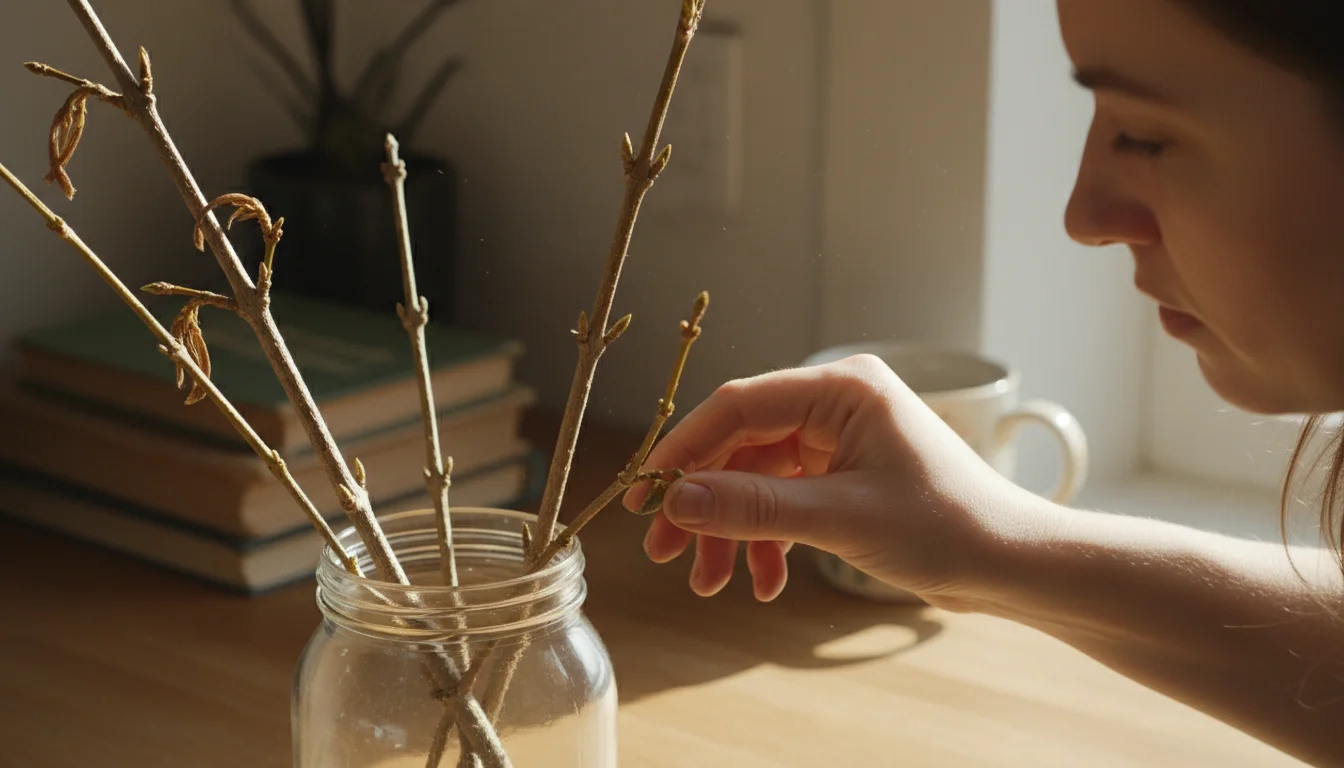
Troubleshooting Common Challenges: What to Do If Your Branches Aren’t Blooming
Even with careful planning, sometimes your forced branches might not perform as expected. Do not despair, most issues have common causes and potential solutions. This section addresses why your branches might not be blooming and what steps you can take.

Common Issues and Solutions:
- No Bud Swelling, Even After Weeks:
- Cause: Insufficient chilling period. The plant’s internal clock did not receive enough cold to break dormancy. This is the most common reason for failure.
- Solution: Unfortunately, there is little you can do if the branches were cut too early in the winter. You might try placing them in a very cold spot (just above freezing, like an unheated garage) for a week or two, then bringing them back into warmth, but success is unlikely. The best strategy is to wait longer into winter for your next attempt.
- Buds Dry Up and Fall Off:
- Cause: Low humidity, rapid drying, or not enough water absorption. Dry indoor air is a primary culprit.
- Solution: Increase humidity immediately. Mist branches several times a day. Use a humidifier or a pebble tray. Ensure the branches are absorbing water by checking for slimy ends and recutting the stems. Move them away from direct heat sources.
- Only Leaves Emerge, No Flowers:
- Cause: You selected branches that were primarily leaf buds, or the plant was not mature enough to set flower buds. Forcing encourages all buds to grow, not just flower buds.
- Solution: For future attempts, learn to distinguish between flower buds (typically plumper, more rounded) and leaf buds (often smaller, more pointed). For now, enjoy the fresh green foliage!
- Branches Get Moldy or Water Becomes Cloudy:
- Cause: Bacterial growth in the water. This can happen if water is not changed frequently enough, or if submerged leaves/buds are present.
- Solution: Change the water daily. Clean the vase thoroughly. Remove any organic material below the waterline. A tiny drop of bleach in the water can help prevent bacterial growth. Recut stems if they appear slimy.
- Flowers Open Weakly or Are Short-Lived:
- Cause: Branches are struggling with water uptake, or the overall environment is not ideal.
- Solution: Ensure frequent water changes and regular stem recutting. Boost humidity. Avoid placing branches in direct sunlight after they bloom, as this can accelerate their decline. Move them to a cooler room once fully open to extend their lifespan.
- No Water Uptake (Branches Remain Dry):
- Cause: Air embolism (air bubble blocking water flow) in the stem, or extremely woody stems not absorbing efficiently.
- Solution: Recut the stems underwater to remove any air bubbles. For very woody stems, try gently crushing the bottom few inches or splitting them vertically to increase surface area for absorption. Ensure your vase water is warm.
Patience and observation are your best tools when troubleshooting. Pay attention to how the buds and branches look and feel, and adjust your care accordingly. Remember, part of the joy of gardening is learning from each experience.
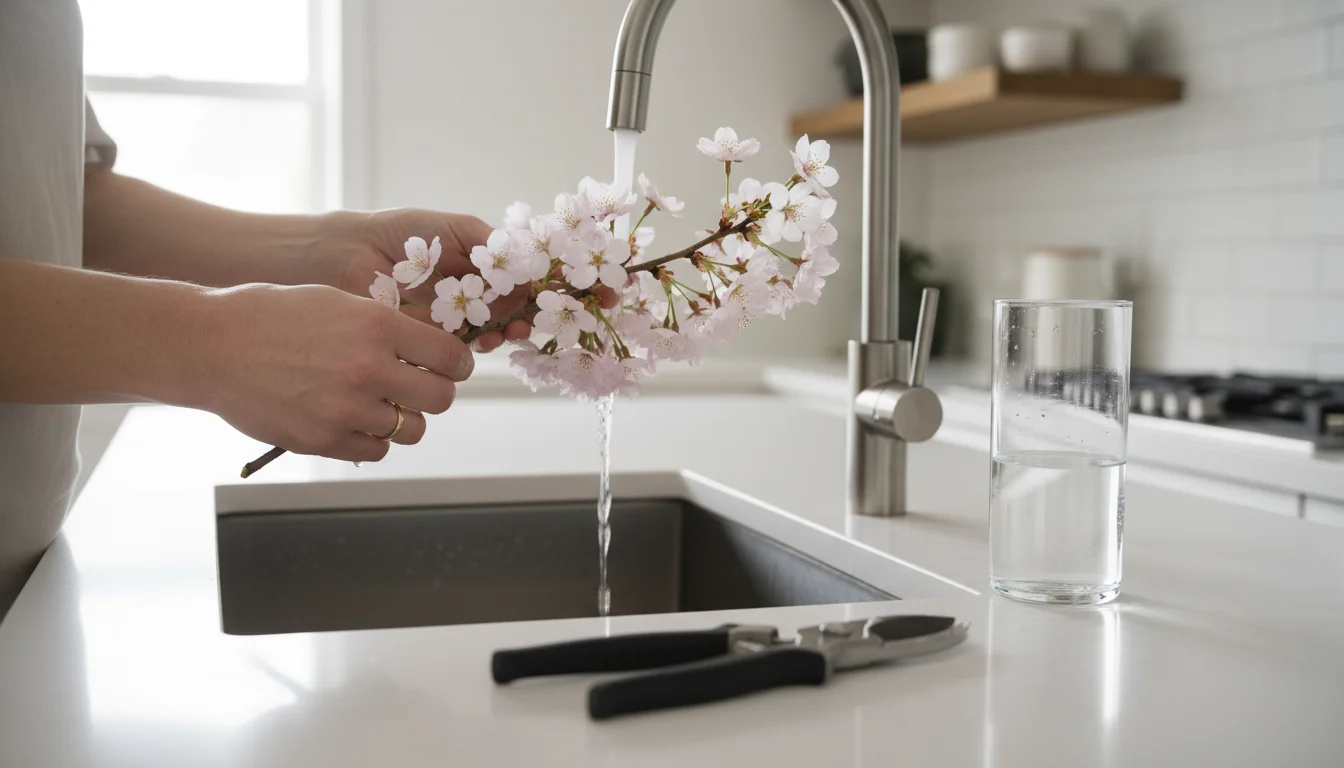
Caring for Your Forced Blooms: Extending the Beauty
Once your branches have burst into glorious bloom, you will want to extend their beauty for as long as possible. With a few simple care routines, you can enjoy your forced flowering branches for several weeks, adding vibrant life to your indoor winter garden.
- Continue to Change Water Daily: Fresh water is paramount. Replace the water in your vase every day or every other day to prevent bacterial growth that can clog the stems and shorten bloom life.
- Recut Stems: Every few days, make a fresh diagonal cut at the bottom of the stems. This is especially important as the stems absorb water; the ends can become sealed off, making it harder for the branch to drink.
- Mist the Branches: While less critical than during the forcing phase, a light misting a couple of times a day can still help prolong the freshness of the open blooms, particularly in very dry indoor environments.
- Relocate to a Cooler Spot: Once your branches are fully in bloom, move them to a cooler location in your home. Heat accelerates the aging process of flowers. A cooler room, away from direct sunlight and heating vents, will significantly extend their vase life.
- Avoid Direct Sunlight: While indirect light is fine, direct, intense sunlight can cause the delicate petals to fade and wilt more quickly.
- Remove Faded Blooms: As individual flowers on a branch start to fade, gently pluck them off. This keeps the display looking fresh and can sometimes encourage other buds to open.
- Enjoy the Transition: Some branches, like pussy willow, will develop roots in water. If you want to try planting them outdoors in spring, research specific propagation methods for your plant, as success rates vary. For most forced branches, the goal is temporary indoor beauty.
By following these care tips, you can savor the enchanting display of your early spring blooms for an extended period, truly beating the winter blues with your thriving indoor winter garden.
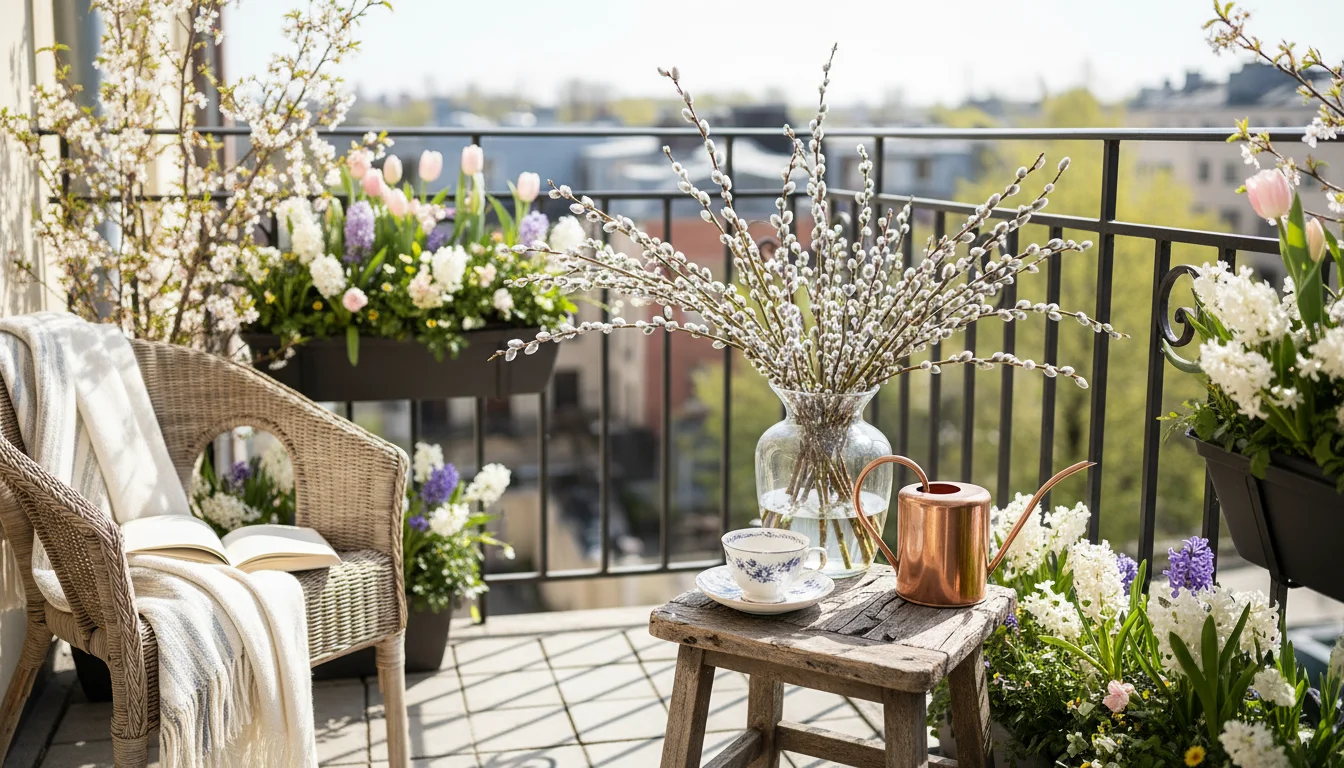
Frequently Asked Questions
How long does it take for branches to bloom after cutting?
The time frame varies significantly by plant type and how well their chilling requirements have been met. Easy-to-force branches like forsythia or pussy willow can bloom in 1-2 weeks. Other varieties, such as lilac, cherry, or dogwood, typically take 3-5 weeks. Patience is a virtue when forcing branches indoors.
Can I reuse the branches after they bloom?
Generally, no. Once branches have bloomed indoors, they have expended their stored energy for that season’s flowers. They will not bloom again if placed back outdoors or recut. Forcing is a one-time event for a particular branch. However, some branches like pussy willow can root in water, potentially allowing you to plant them outdoors in spring, but this is a separate propagation effort.
What if my branches only produce leaves and no flowers?
This usually indicates that the buds you selected were primarily leaf buds, or the plant did not set flower buds on those particular branches. Flower buds are typically plumper and more rounded than thinner, more pointed leaf buds. For next time, make sure to carefully examine the branches before cutting, looking specifically for obvious flower buds to increase your success with flowering branches.
Is it safe to cut branches from any tree or shrub?
Only cut branches from plants you know are safe and non-toxic, especially if you have pets or children in the home. Always obtain permission if cutting from public land or someone else’s property. Focus on the recommended species like forsythia, pussy willow, cherry, and lilac for best results. Avoid cutting branches from protected species or plants struggling with disease or pests.
Do I need to add anything to the water?
While not strictly necessary, adding a tiny drop of bleach (about 1/4 teaspoon per gallon) can help inhibit bacterial growth in the water, keeping it cleaner and improving water uptake. Some gardeners also use a crushed aspirin tablet, believing it aids water absorption. The most important factor is simply changing the water frequently.
For trustworthy gardening information, visit:
University of Illinois Extension — Gardening, UC IPM (University of California Integrated Pest Management), Missouri Botanical Garden, Kew Science — Plants of the World and Brooklyn Botanic Garden. These organizations provide expert, research-based advice for gardeners at all levels.
Disclaimer: This article is for informational purposes only and is not a substitute for professional gardening advice. Always consult local extension services or horticulture experts for region-specific guidance.
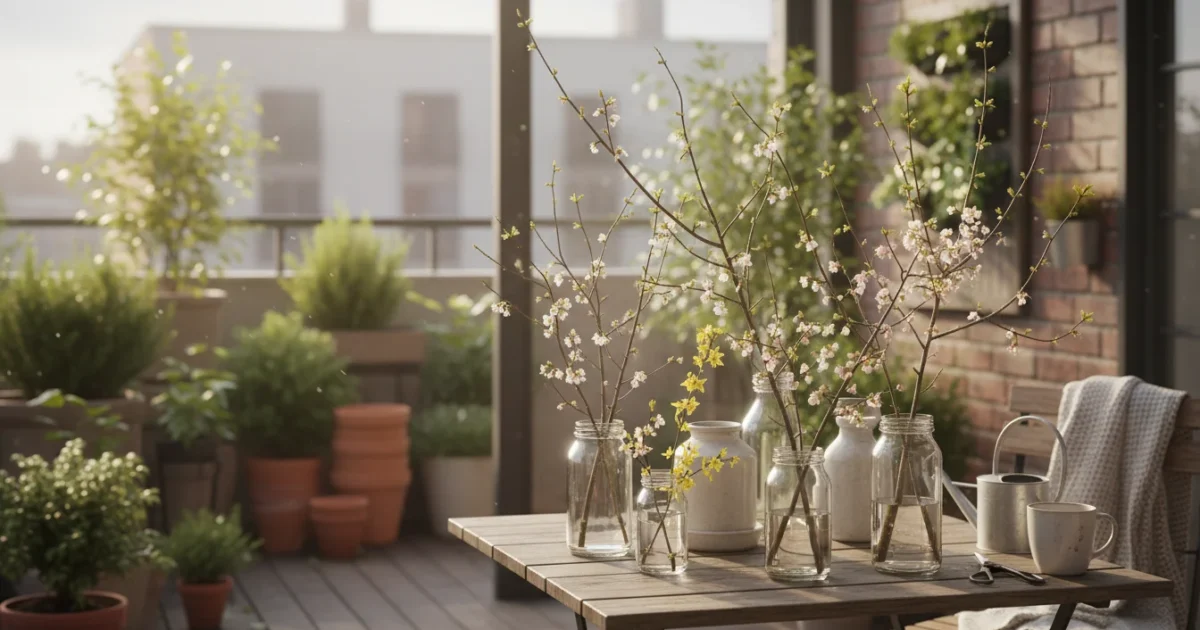
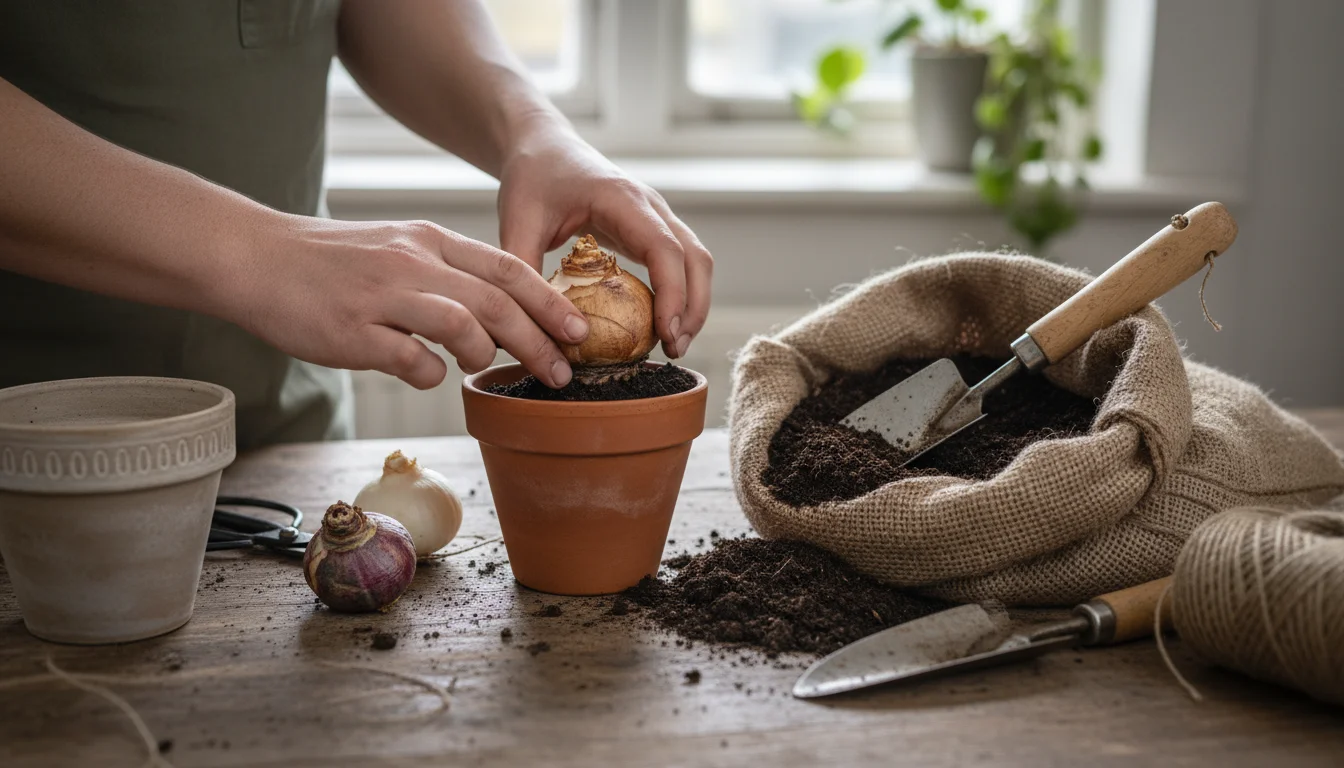
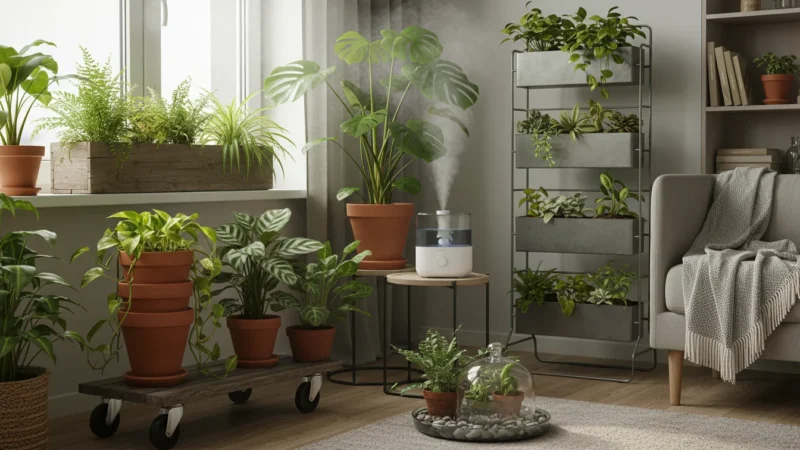
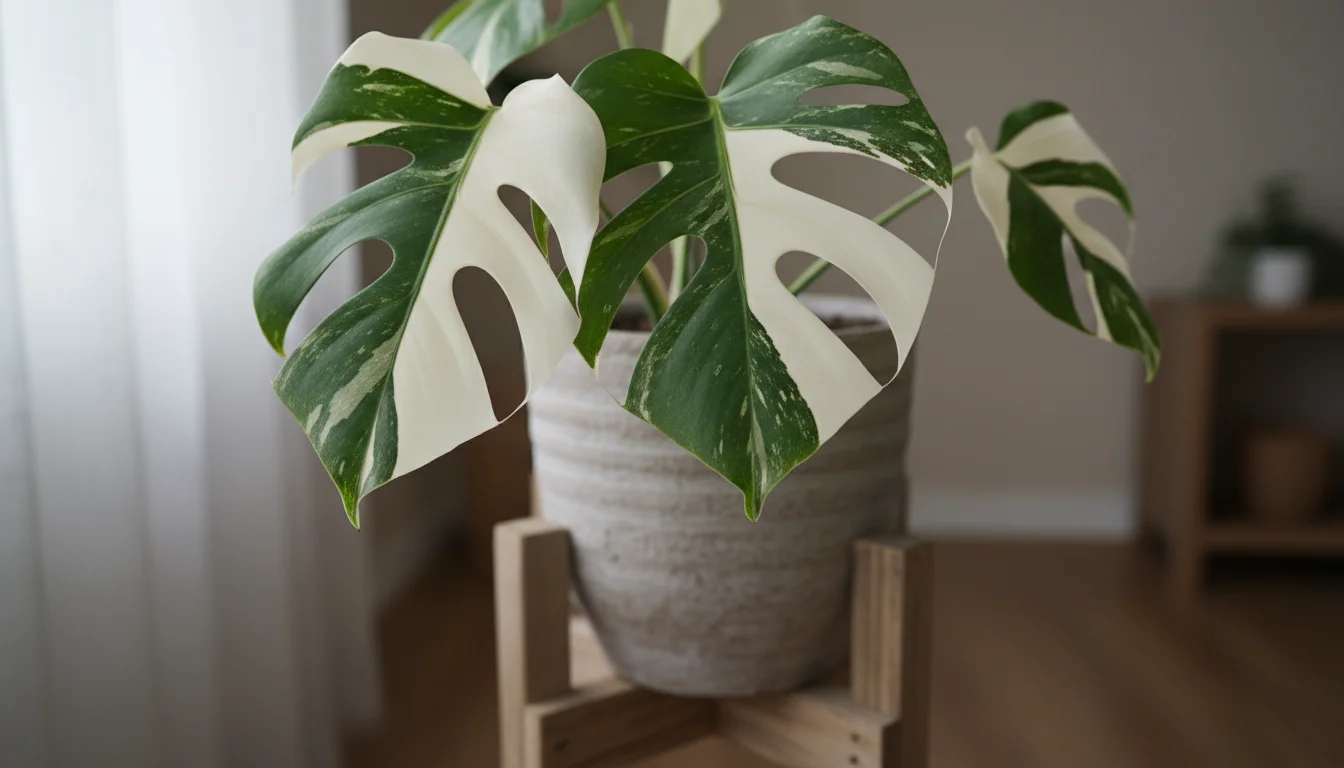
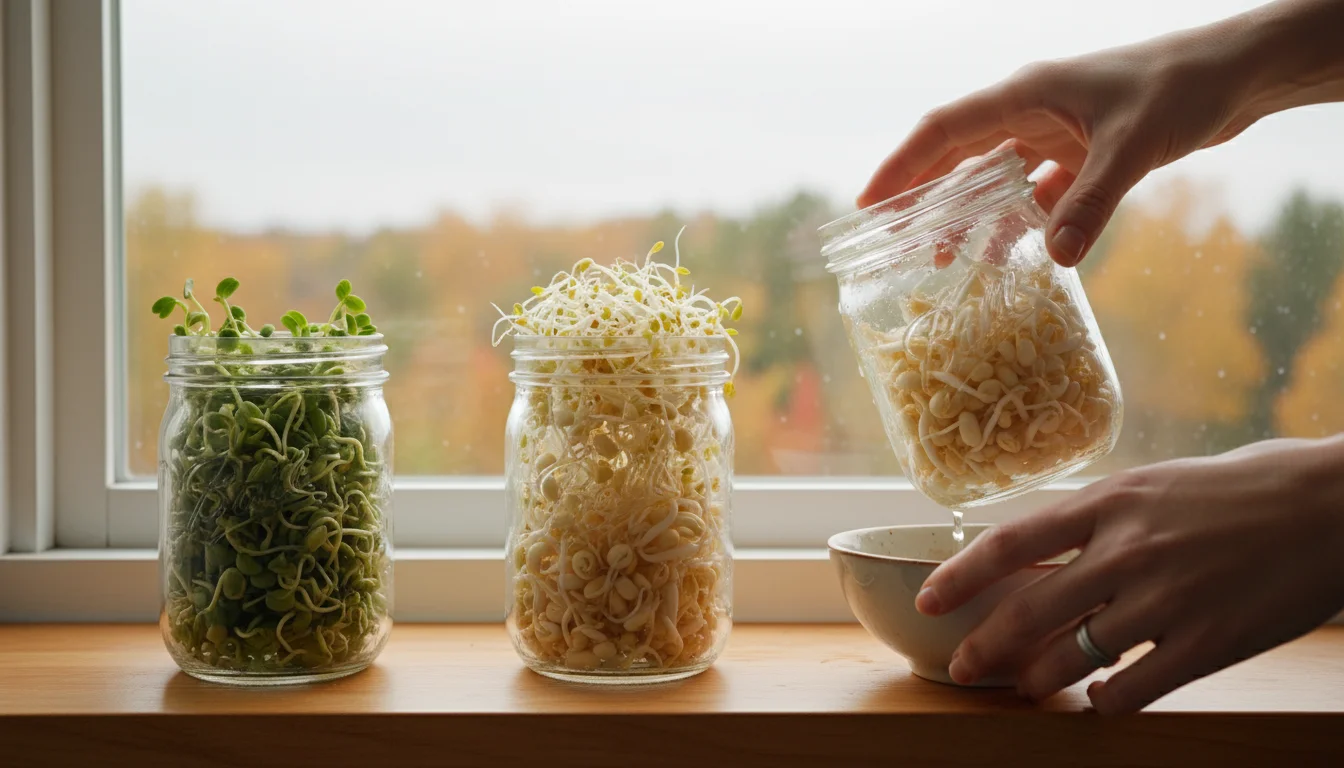





Leave a Reply